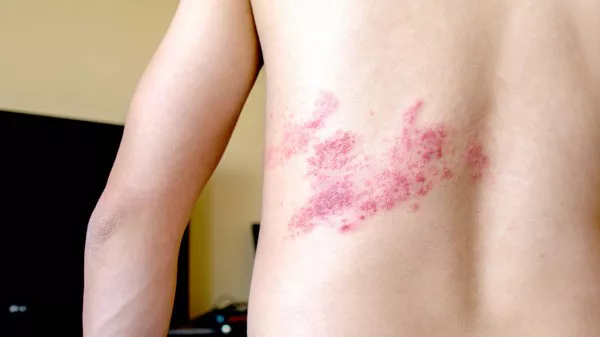Shingles, also known as herpes zoster, is a viral infection that causes a painful rash. It is caused by the varicella-zoster virus, which is the same virus that causes chickenpox. After a person recovers from chickenpox, the virus can remain dormant in the body and reactivate years later, leading to shingles. While the acute symptoms of shingles can be distressing, the potential long-term effects and complications can also pose significant challenges to individuals even after the rash has cleared.
Chronic Pain (Post-Herpetic Neuralgia)
One of the most common long-term effects of shingles is chronic pain known as post-herpetic neuralgia (PHN). PHN is characterized by persistent pain in the area where the shingles rash occurred. This pain can be sharp, burning, or throbbing and may last for months or even years after the rash has healed. The severity of PHN can vary from person to person and can significantly impact daily life, affecting sleep, mood, and overall quality of life.
The exact cause of PHN is not fully understood but is thought to be related to damage or irritation of nerve fibers during the shingles infection. Older individuals are more at risk of developing PHN, as are those who experienced severe pain during the acute phase of shingles.
Vision Complications
Shingles affecting the ophthalmic nerve (a branch of the trigeminal nerve) can lead to eye-related complications, a condition known as herpes zoster ophthalmicus. This can result in inflammation and infection of the eye, including the cornea and surrounding tissues. The consequences can range from mild irritation to more serious issues such as corneal scarring, glaucoma, or even vision loss.
Early treatment is crucial to minimize the risk of permanent damage. Ophthalmologists often prescribe antiviral medications and topical steroids to reduce inflammation and prevent complications. Regular follow-up appointments are necessary to monitor eye health and manage any ongoing issues.
Neurological Complications
In some cases, shingles can lead to more serious neurological complications. These may include:
1. Encephalitis: Inflammation of the brain, which can cause symptoms such as headache, confusion, seizures, and fever.
2. Meningitis: Inflammation of the membranes surrounding the brain and spinal cord, resulting in symptoms like headache, fever, stiff neck, and sensitivity to light.
3. Ramsay Hunt Syndrome: This occurs when the varicella-zoster virus affects the facial nerve, leading to facial paralysis, ear pain, hearing loss, and a rash around the ear.
Neurological complications of shingles are relatively rare but can be severe. Prompt medical attention is essential if any neurological symptoms develop after a shingles infection.
Emotional and Psychological Impact
The impact of shingles extends beyond physical symptoms, often affecting emotional and psychological well-being. Chronic pain, fatigue, and other lingering symptoms can lead to anxiety, depression, and social isolation. The frustration of dealing with ongoing discomfort and the uncertainty of recovery can take a toll on mental health.
Support from healthcare professionals, family, and friends is crucial in managing the emotional impact of shingles. Counseling, support groups, and relaxation techniques may also be beneficial in improving mental well-being.
Other Potential Complications
Besides the aforementioned effects, shingles can sometimes lead to other complications:
1. Skin Infections: Scratching the shingles rash can lead to bacterial skin infections.
2. Muscle Weakness: Shingles affecting motor nerves can cause temporary muscle weakness or paralysis.
3. Chronic Fatigue: Some individuals experience persistent fatigue long after the acute phase of shingles has resolved.
Prevention and Management
The best way to prevent shingles and its long-term complications is through vaccination. The shingles vaccine, recommended for adults over 50, significantly reduces the risk of developing shingles and lowers the likelihood of severe complications if the infection does occur.
For individuals who have already had shingles, managing long-term effects involves a combination of medication, physical therapy, and lifestyle adjustments. Pain management strategies, such as prescription medications or nerve blocks, can help alleviate chronic pain. Physical therapy can improve mobility and function in affected areas.
Regular follow-up with healthcare providers is essential for monitoring any lingering symptoms or potential complications. Adopting a healthy lifestyle, including a balanced diet, regular exercise, and stress management techniques, can also support overall recovery and well-being.
Conclusion
In conclusion, while shingles is often considered a short-term illness, its impact can persist long after the rash has faded. Understanding the potential long-term effects and complications of shingles is crucial for both prevention and effective management. Vaccination, early intervention, and comprehensive care are key in reducing the risk of long-term complications and improving the quality of life for individuals affected by shingles.
Related Topics:

























